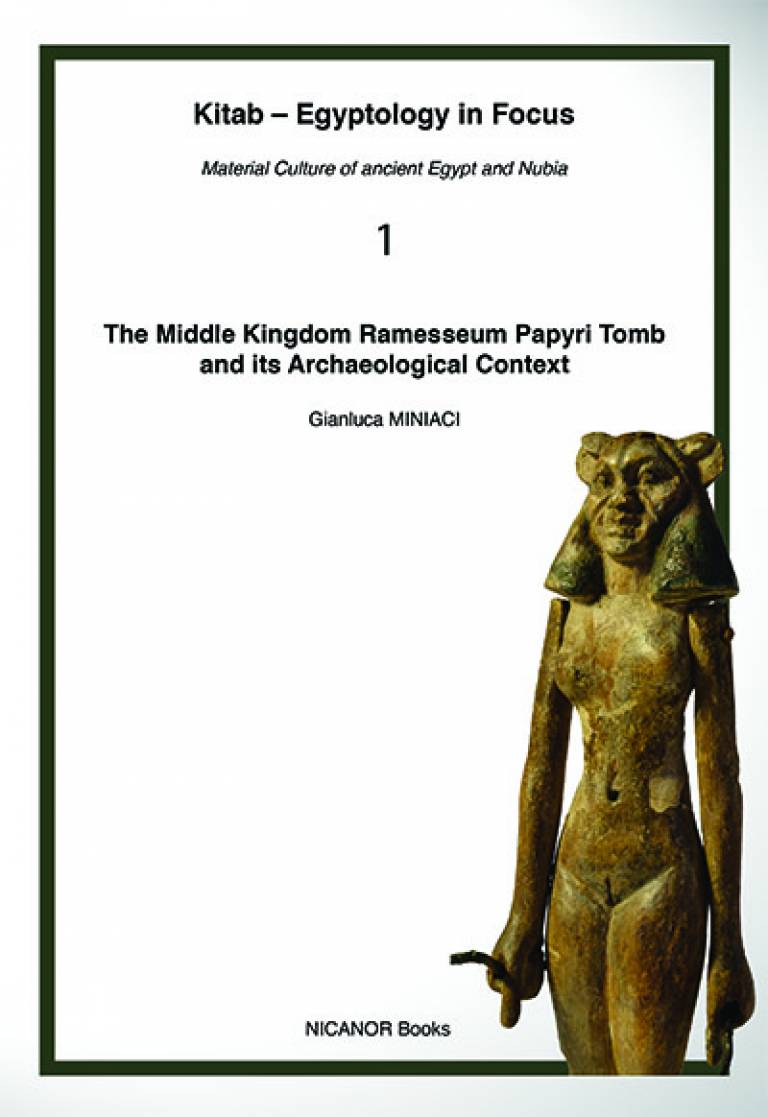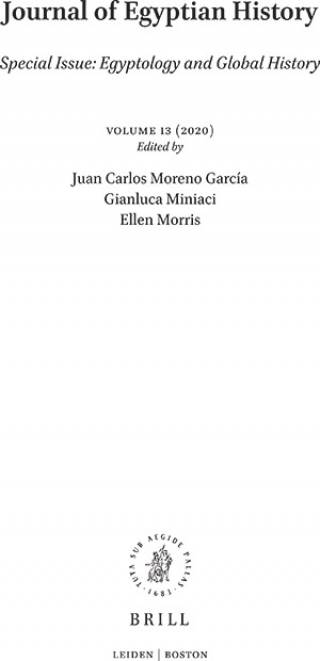The Middle Kingdom Ramesseum Papyri Tomb and its Archaeological Context
7 May 2021
Two new volumes on Egyptological topics by Gianluca Miniaci (Honorary Research Associate), have been published recently - a single-authored monograph and an edited volume for a special issue of the Journal of Egyptian History.

Gianluca Miniaci, The Middle Kingdom Ramesseum Papyri Tomb and its Archaeological Context, Kitab – Egyptology in Focus 1, Nicanor Books, London
Abstract:
In 1895–96, William Matthew Flinders Petrie and James Edward Quibell discovered a shaft-tomb below the ‘Ramesseum’, the funerary temple of Ramses II at Thebes, Egypt. This is most famous for having the largest group of Middle Kingdom papyri – also known as the Ramesseum Papyri – found in a single spot together with a number of distinctive objects, such as carved ivory tusks and miniature figurines in various materials dated around XVIII century BC. Gianluca Miniaci attempts to thoroughly reconstruct the archaeological context of the tomb: the exact find spot (forgotten afterwards its discovery), its architecture, the identity of its owner(s) and recipient(s) of the assemblage of artefacts. A detailed analysis of the single artefacts – provided for the first with full color photographic records and drawings – and their network of relations gives new life to the Ramesseum assemblage after more than a century from its discovery.
The volume is part of the PROCESS project "Pharaonic Rescission: Objects as Crucibles of ancient Egyptian Societies", PRIN-MIUR led by Gianluca Miniaci.
Further details
Volume available online at Casemate Academic
Free downloads available from Nicanor Books, Amazon, Apple Books and Google Books
Egyptology and Global History, edited by Moreno Garcia, Juan Carlos; Miniaci, Gianluca; Morris, Ellen, special issue of Journal of Egyptian History 13 (2020)

Abstract:
The publication of this special issue of the Journal of Egyptian History intends to explore the place and role of Egyptology in Global History, as well as its potential contributions to this burgeoning field of research. In order to achieve this goal, the journal’s editors have considered it useful to invite scholars who are not Egyptologists, but whose expertise in topics and regions that are increasingly relevant for a better comprehension of ancient Egypt will certainly stimulate both interdisciplinary dialogue and a better integration of data from the land of the pharaohs into current debates in social sciences.
Other articles intend to explore new paths of comparative research, for instance about concepts that helped define the political and social principles that guided the everyday exercise of political action in ancient societies, or the way in which the past was recorded and mobilized for practical reasons.
Connectivity is also becoming a major focus of research in archaeology and ancient history, and it increasingly reveals the influence that particular cultural, technical, or economic phenomena exerted over major developments across vast spaces. So, the modalities of integration of ancient Egypt (a marginal actor or an unsuspected influence?) in these spheres of interaction is certain to gain momentum in the next decades. They may also help scholars to understand the nature of the relations or the type of the policies followed by Pharaohs and by other actors (traders, agents of the crown, etc.) toward neighbouring areas. In return, they may also shed light on major changes that occurred in Egypt and which share, nevertheless, common features with other regions of the ancient Near East.
One final urgent question concerns the role Egyptology is called to play in a shifting cultural, educational, and intellectual landscape no longer centred on the cultural priorities and geopolitical goals of the West. The articles gathered in this special issue try to cast some light on these topics, and it is the editors’ hope that they will stimulate debates among Egyptologists as well as with specialists working on neighbouring disciplines and, more generally, on social sciences.
Further details
 Close
Close

